June 4, 2024
After a somewhat messy first bike day, the second went much smoother. We had breakfast in the lobby at 7am and hit the road by 8 (after untangling the bike-lock-puzzle we had created the night before).
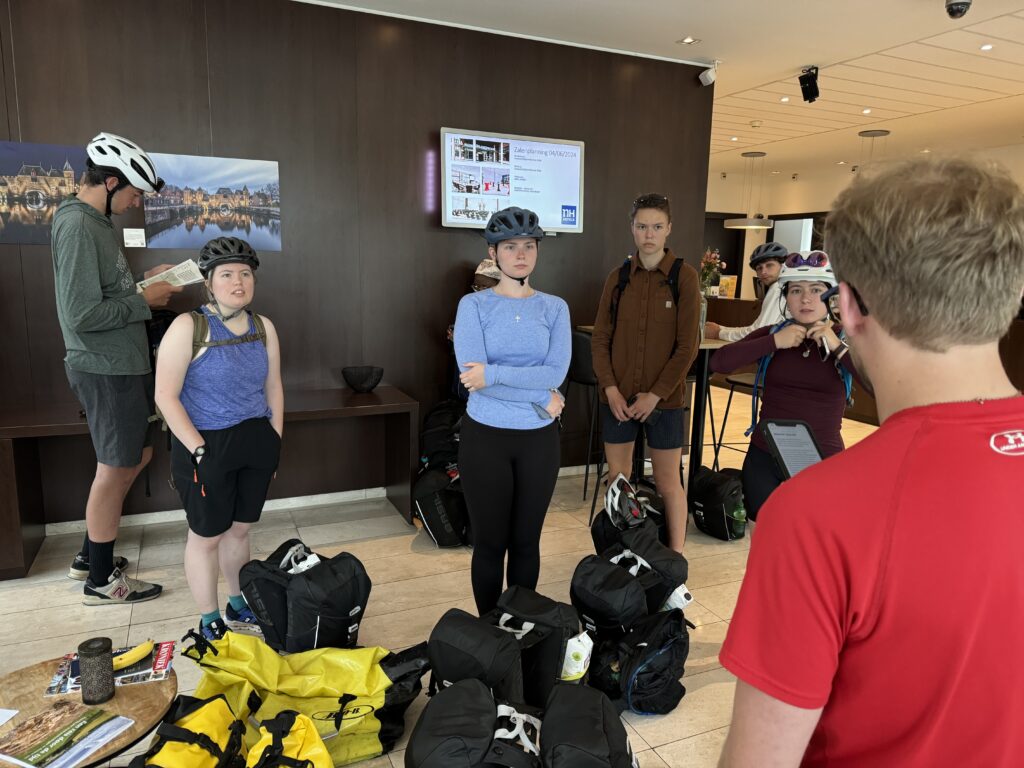
While yesterday was many people’s bike distance PR, today we went even further, as our destination was Nijmegen. Also, after realizing yesterday that a 14-person bike conga line was terribly inefficient, we split into two groups staggered 5 minutes apart. This allowed us to go the full 65 km in only a little over 5 hours, including stops and a quick ferry ride! I’m very proud of everyone and think we all did great! (Kris’ addition: I’m proud of everyone too!)

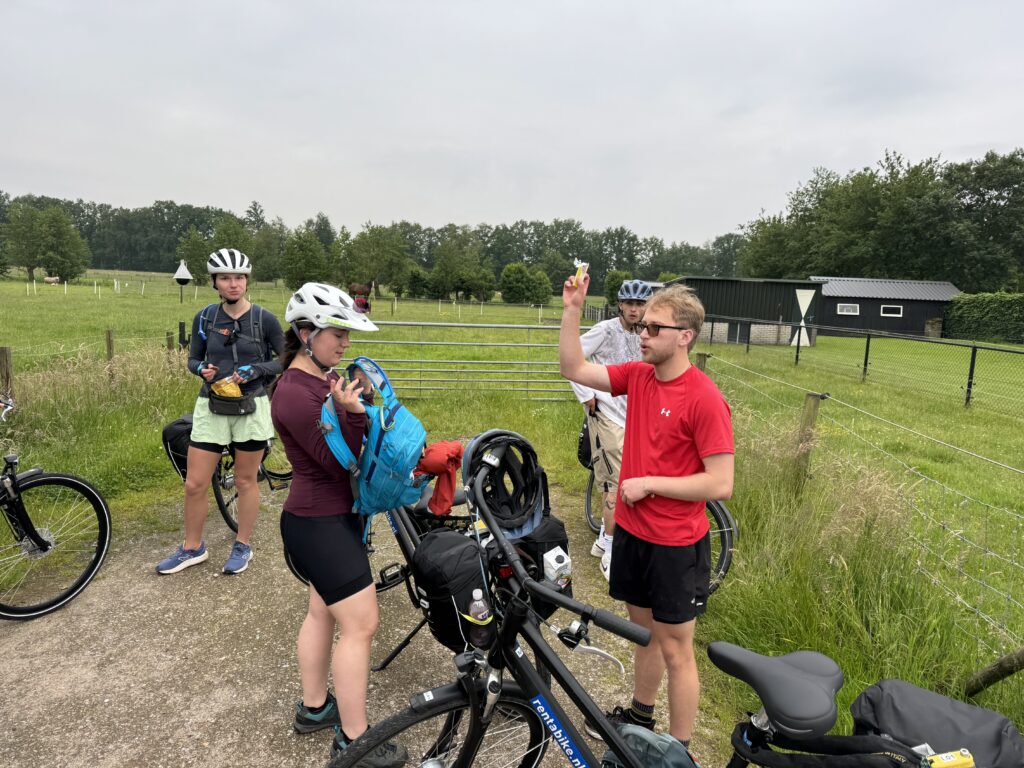
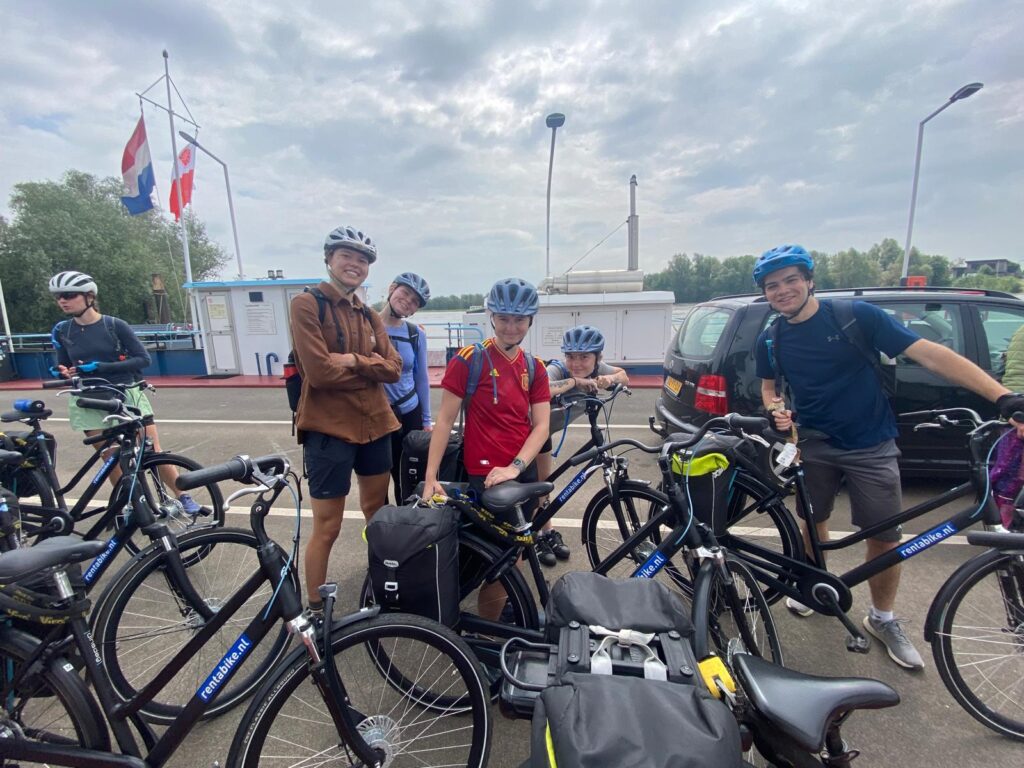
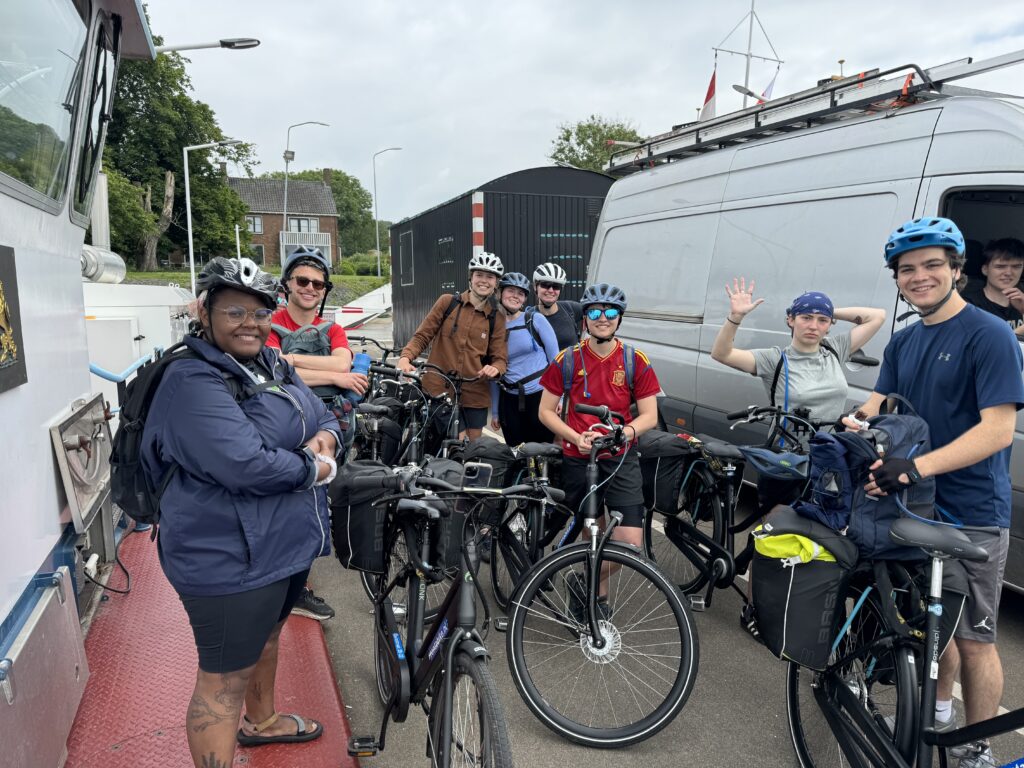
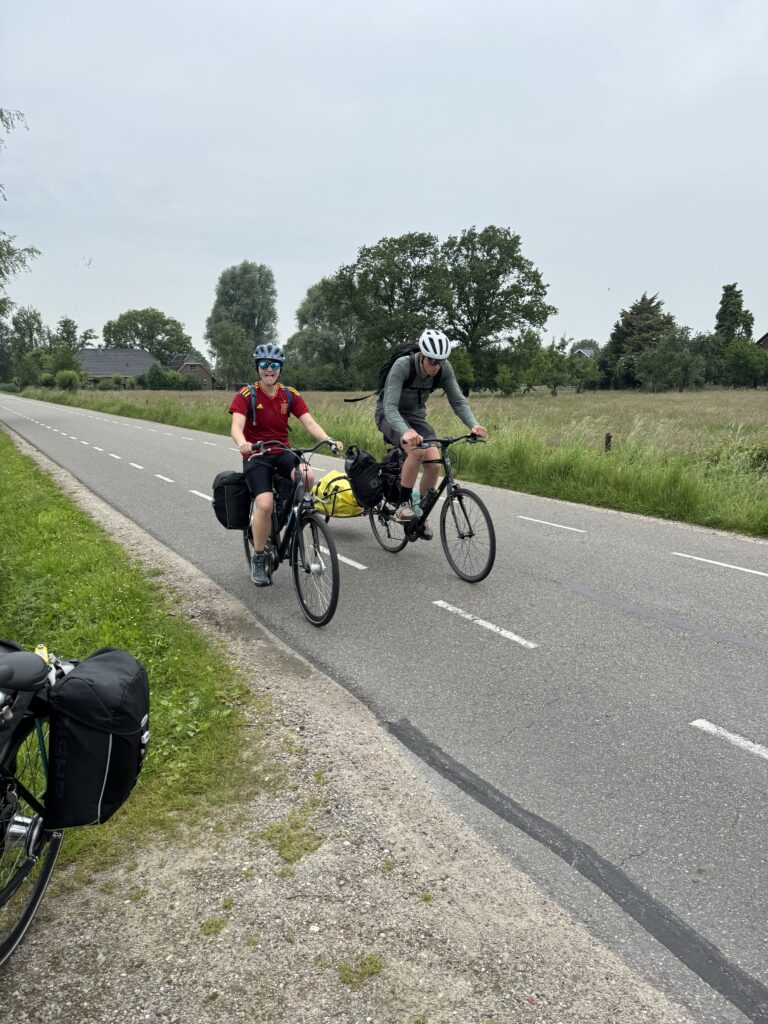
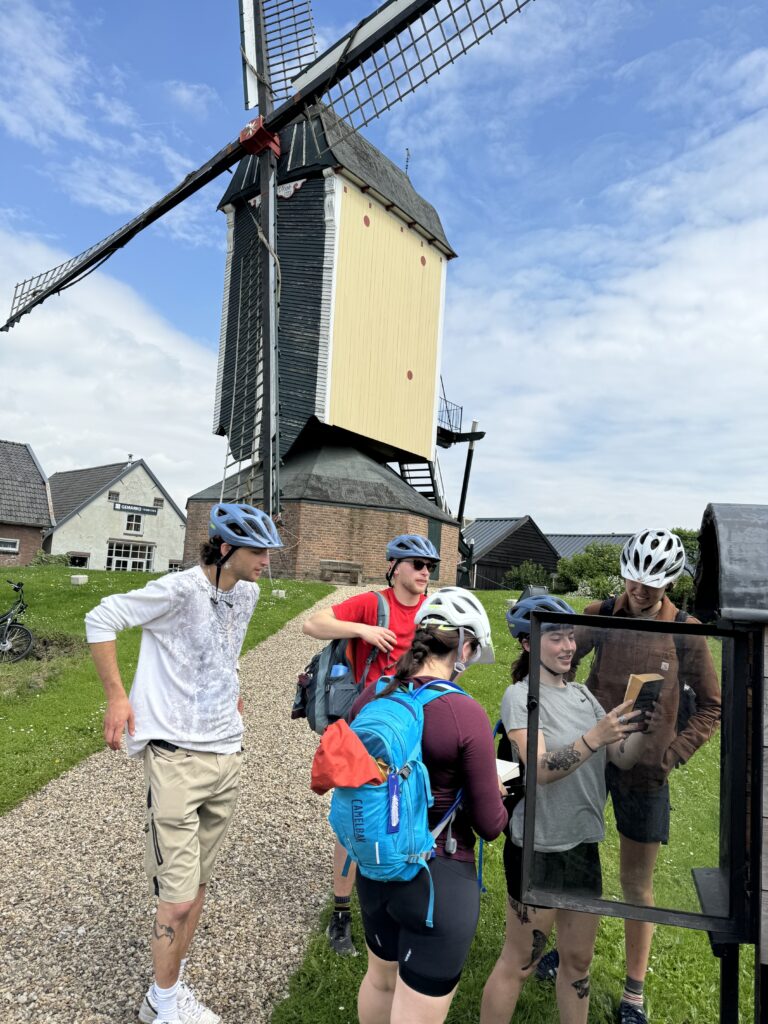
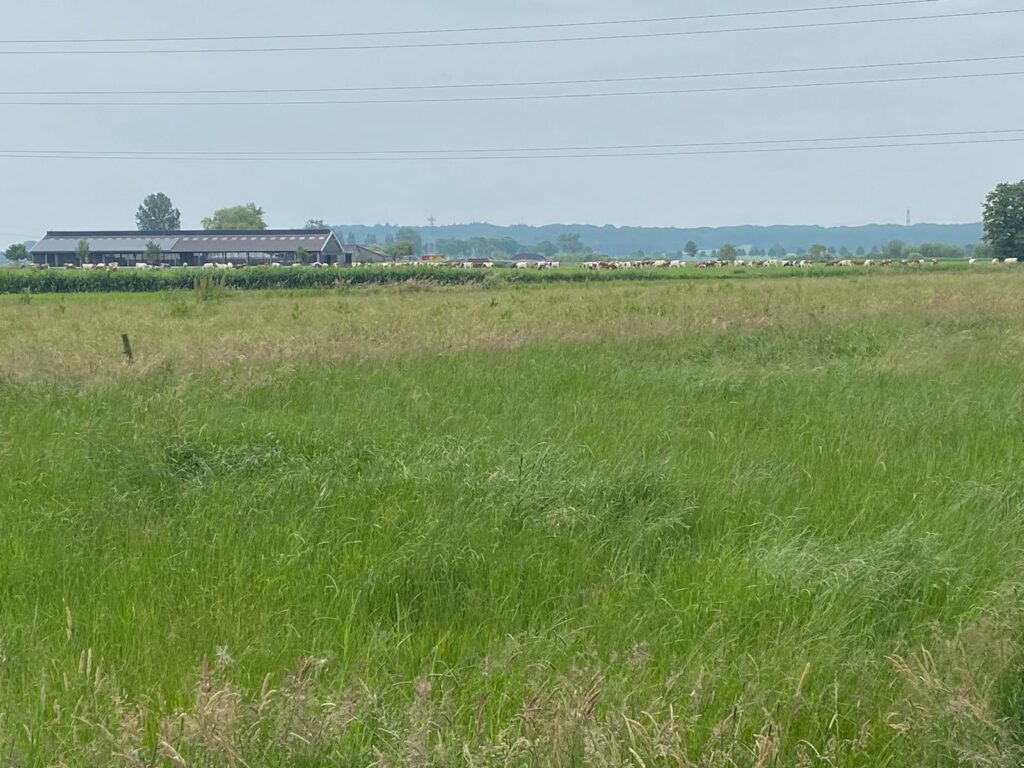
Upon arriving to Nijmegen, we stopped at a cute ice cream and coffee shop so people could get their caffeine and sugar fill. I had a raspberry cone, while others dared to try the blue “Smurf” flavored cone.

After we had refilled our waters and finished our cones, our city employee/tour guide/expert, Maarten, arrived.
The tour began with a conversation around a 400 year-old cannon.
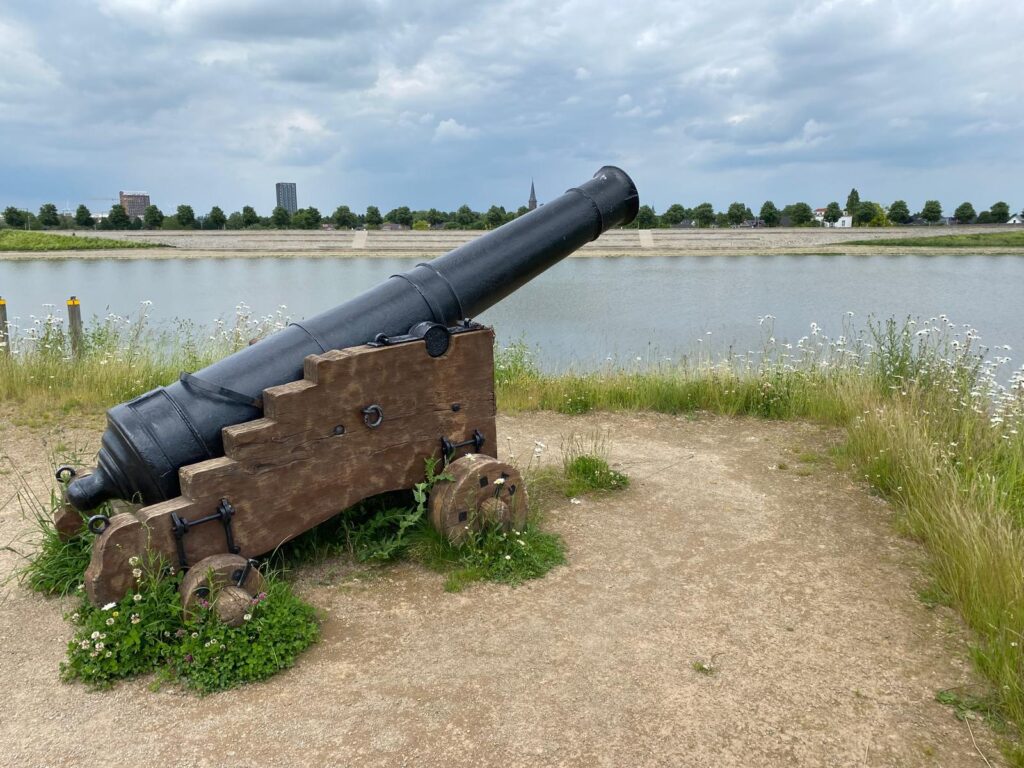
Here we learned that the river we overlooked was actually engineered to prevent city flooding. (The river narrows as it enters a large bend at the city of Nijmegen. During flooding, its added power put the city of Nijmegen at risk as it is perched atop the outside bank of the river which was liable to erode away.)
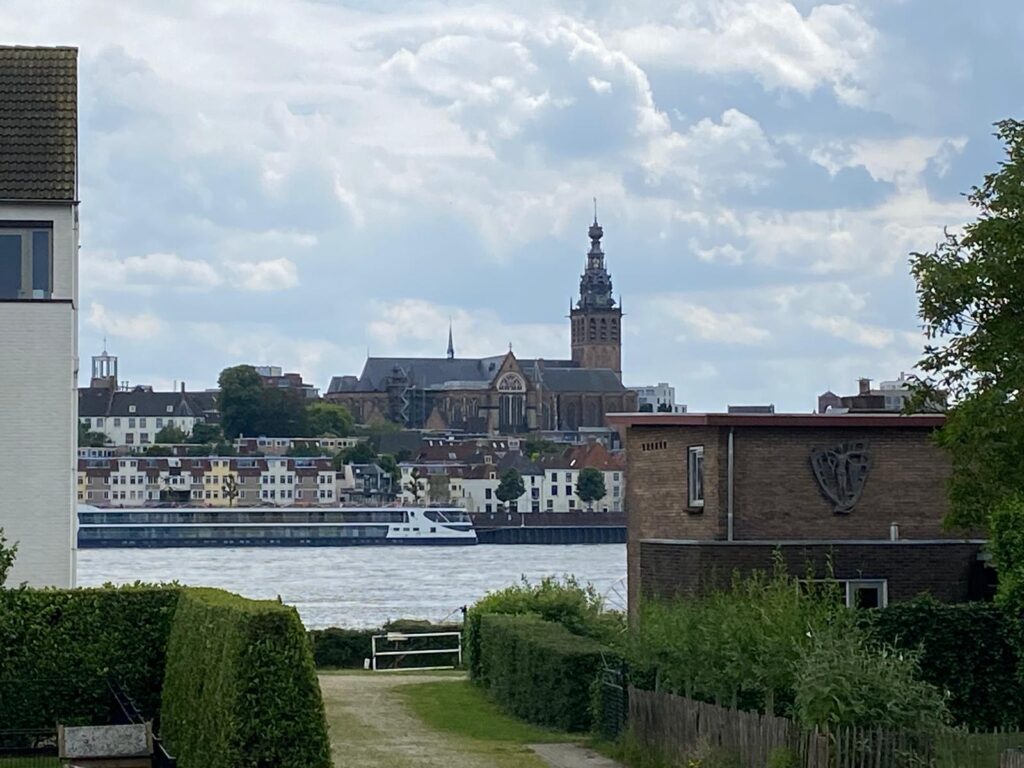
He showed us maps explaining that the bottleneck dikes are used to protect Nijmegen as it is the most centrally used shipping lane in Europe.
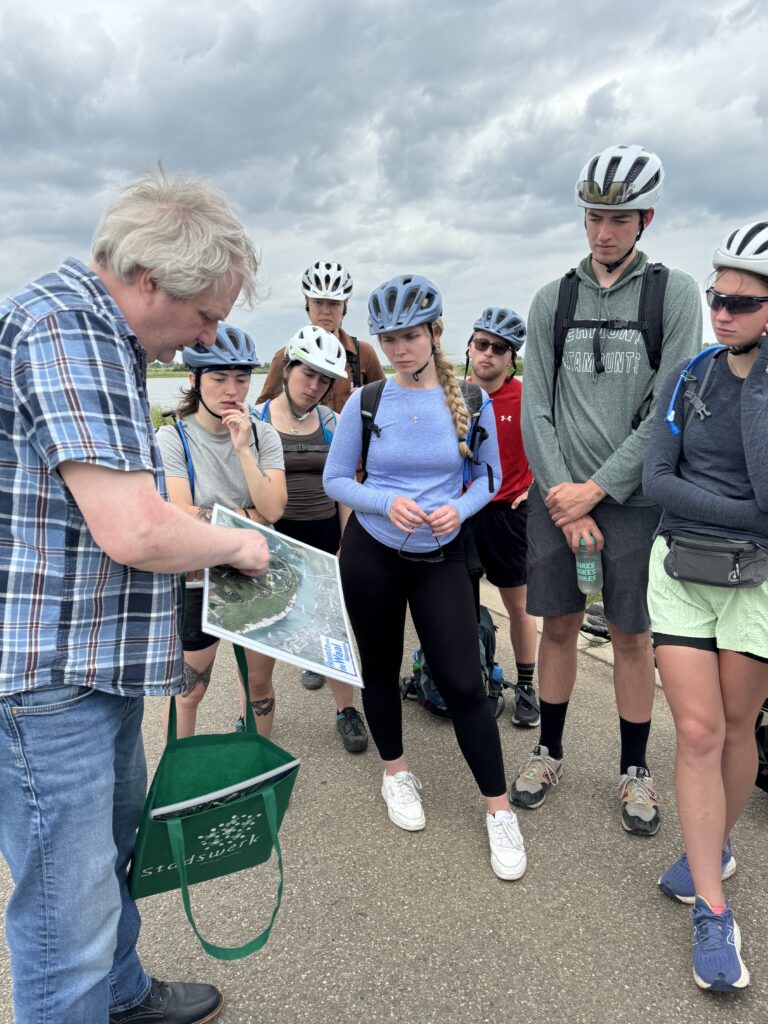
This model they use is ingenious because it’s a solution that only works when the river floods. When it does flood, the water flows over the river bank and into an engineered side channel designed to hold the extra water, creating an island in-between the side channel and original river. He then explained that the Room for the River is about 35 projects along the shore of several rivers in the Netherlands to ensure safety for country while also making the river look more attractive and increasing its spatial quality.
After, we hopped back on the bikes (as if we hadn’t been on them enough already) and got a tour of the room for the river project in Nijmegen. We stopped at the path that gets flooded when the channel is needed, learning that later this week it probably will flood (due to the flooding in Germany happening now that will make its way downstream to Nijmegen). We also rode on multiple bridges designed for both cars and bikes.
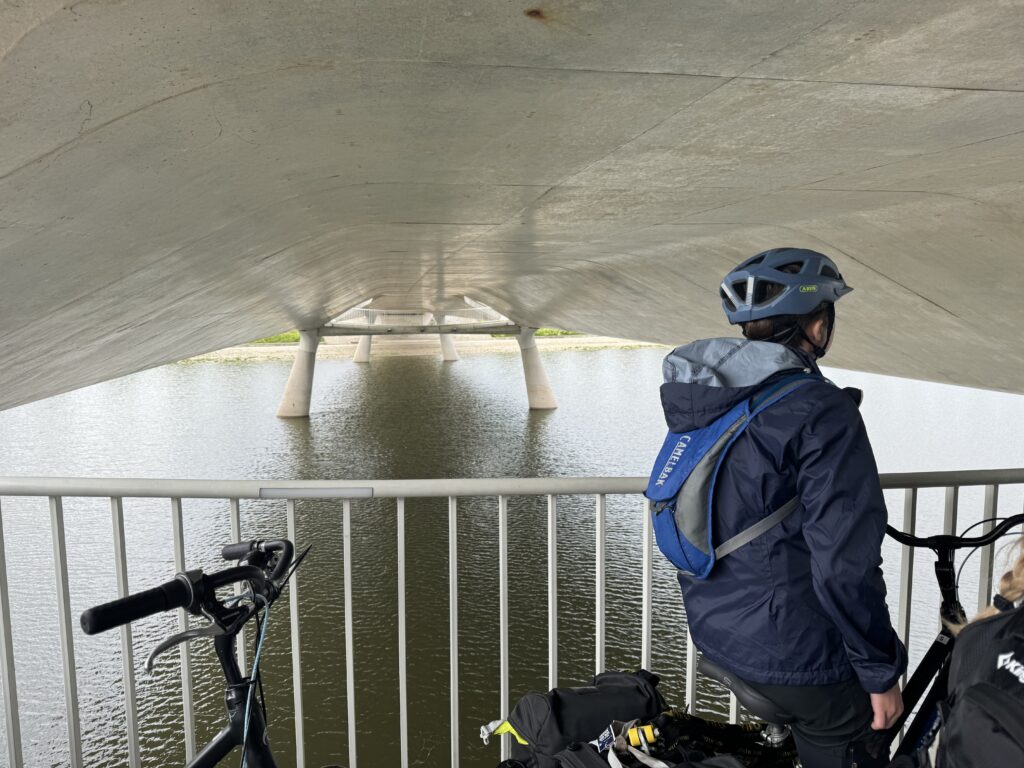
We had lots of meaningful conversations about the ecology of the river banks, government funding for projects, social aspects of moving houses/people for river projects, three bridges designed by three separate groups of people, prediction of potential floods, and other informative topics.
Maarten escorted us to our hotel. Then we cleaned up, went out to eat, did our journal entries (hopefully), and went to bed. Once again I’m so proud everyone, y’all killed it and y’all are gonna keep killing it. I’m very happy I’ve gotten the opportunity to meet everyone, and I can’t wait to do more riding and learning!
I hope you have enjoyed (or at least tolerated) the day narrated by yours truly. I love you mom, dad, Greta, and Celeste, see you guys soon!
